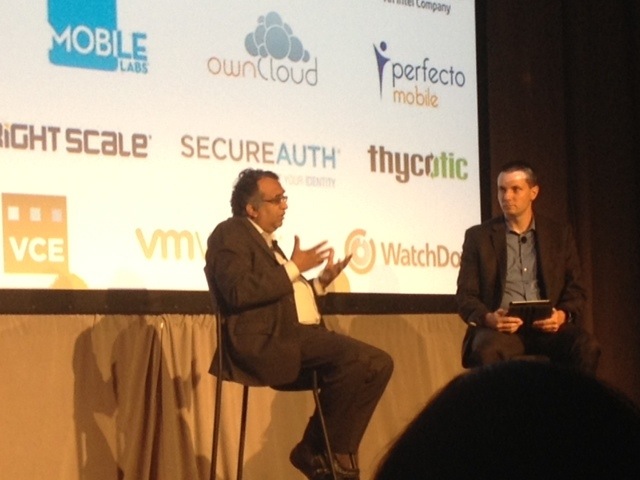VCE attended Gartner Catalyst 2013 at the end of July to connect and network with peers, customers, and analysts. Although there were many resonating facts from Gartner and presenters throughout the industry, below I’ve outlined the key trends, tracks, inspirations, and takeaways for our wider audience.
Trends

Businesses must adapt quickly to changing environments. In response, IT must enable and facilitate the adaptation process, assimilating technology faster than ever before. Resources must be organized for optimizing agility and speed. Whether for infrastructure, apps, mobile, or the cloud, placing resources in silos often limits the value organizations can get from their IT department.
Companies and IT teams must consciously be the broker, rather than the builder, to assimilate technology faster. IT has to partner with builders and establish an operational rhythm that benefits their business. Further, IT has to converge to compete better with what their company may see as another path outside of IT. In many instances, adapting businesses means that IT teams must be razor focused on execution.
When the audience for the public cloud vs. private cloud debate was un-scientifically polled about trusting cloud infrastructure, it was clear that private clouds are overwhelmingly perceived as the more secure option.
Tracks
Tracks for Gartner Catalyst followed larger themes of mobile, cloud services, productivity, private cloud creation, security, and big data. Sessions provided several validations as well as insights on the challenges, triumphs, and desires of customers in the evolving landscape of IT.
Inspirations
Several companies have successfully identified applications that can exist in private and public clouds. However, the process of achieving a hybrid cloud is still a goal for most companies. Notably, the ability to offload even a drop down menu on a mobile or web application to the public cloud can generate huge customer benefits – the end user gets a faster and more responsive experience.
Continuous deployment and loose coupling concepts are also on the rise. Several companies told stories of how their agile approach initially was met with rejection and objection. However, these companies ultimately won over the internal and external customers that benefitted from consistent and regular incremental improvements.
Amazon Web Services (AWS) sessions were well attended. In each example, it was clear that getting data into the public cloud was as important as being able to bring data back on premise. The number of household names that have determined where to use AWS was not unlike the so-called “wisdom of crowds” concept. For other Cloud Service Providers, this means that customers realize the greatest benefits when the largest number of use cases are explored.
Take Away Items
Decision-making frameworks for cloud adoption still need additional research output. However, customers should be working on a lightweight decision making framework for cloud adoption. Therefore, the quicker the decision iteration, the easier it will be to measure what works and what does not work for cloud adoption.

Gartner highlighted EMC Cloud Services (formerly Adaptivity) as having great tools for evaluating workloads for cloud. While Gartner does not endorse any specific vendors, this was meant to point out tools that customers should consider and evaluate closely.
Public clouds are still viewed through a lens of what they are lacking, including security, quick recovery time, a universal use case, compatibility for all legacy apps, and regulatory considerations. However, companies cannot deny the economics of quickly and easily accessing resources, which differentiates Cloud Service Providers despite these specific gaps and concerns. In order to increase their competitive advantage, Cloud Service Providers have to prove they have adequate protections that cover security breaches, SLA notifications, and service reliability.
While half of the attendees indicated that they use the public cloud, only one of five noted that they manage the public cloud with same tools as their data center and/or private cloud. It is clear that DCIM has a long way to go. Even in the comparisons of DCIM players in this space, there was a clear message that maturity is still highly subjective.
Private clouds need to benefit the business in addition to benefiting central IT. Possible private cloud paths are Turnkey, DIY, and Outsource. Cloud tiering will occur based upon service level requirements.
- Turnkey solutions will become more commonplace and closely maps to the rise in converged infrastructure as a popular alternative to reference architectures. Further, off the shelf private cloud solutions will lower TCO of private cloud.
- DIY has increased costs and complexity, but less perceived lock-in and the DIY path is popular with very large global companies.
- Outsource lets vendors do the hard work, meaning the customer can focus concentration on providing services that can be exposed by the private cloud.
Multiple hypervisors create complexity, so the fewer the hypervisors, the better equipped an IT team will be to satisfy business demands. IT teams should take a page from the service provider playbook: standardize and simplify.